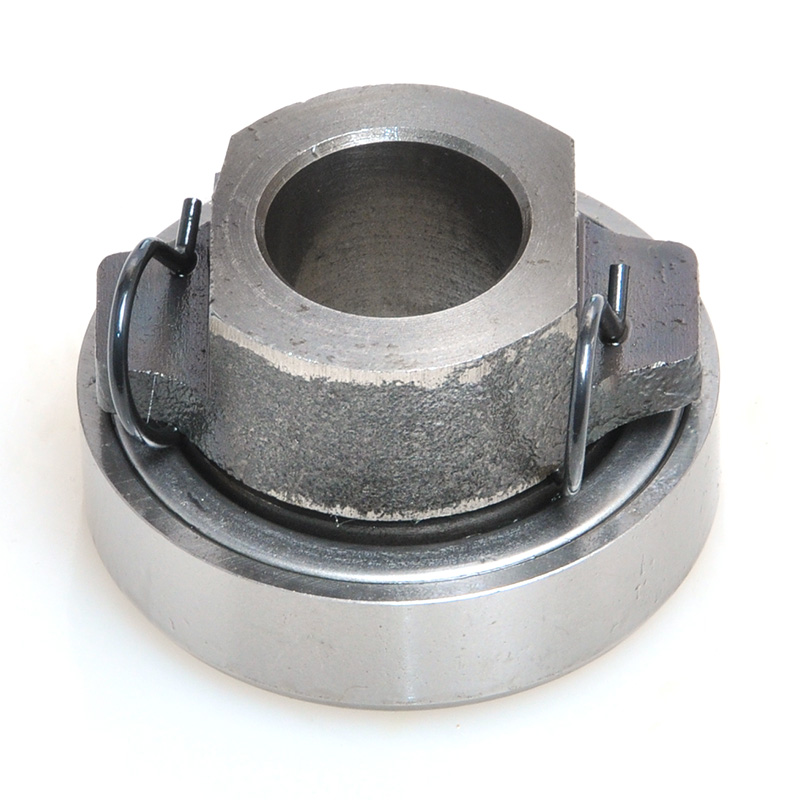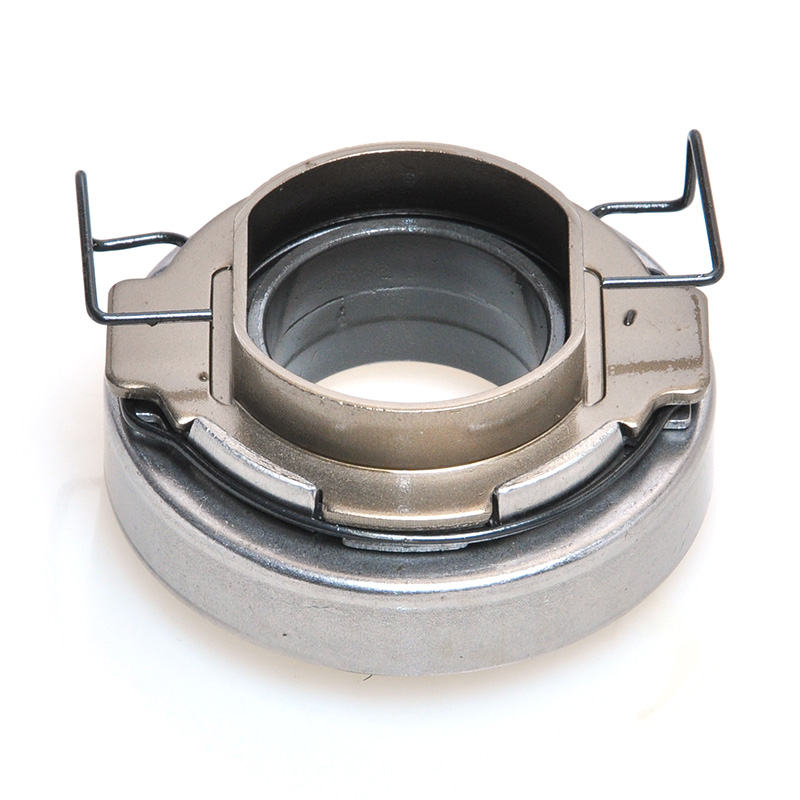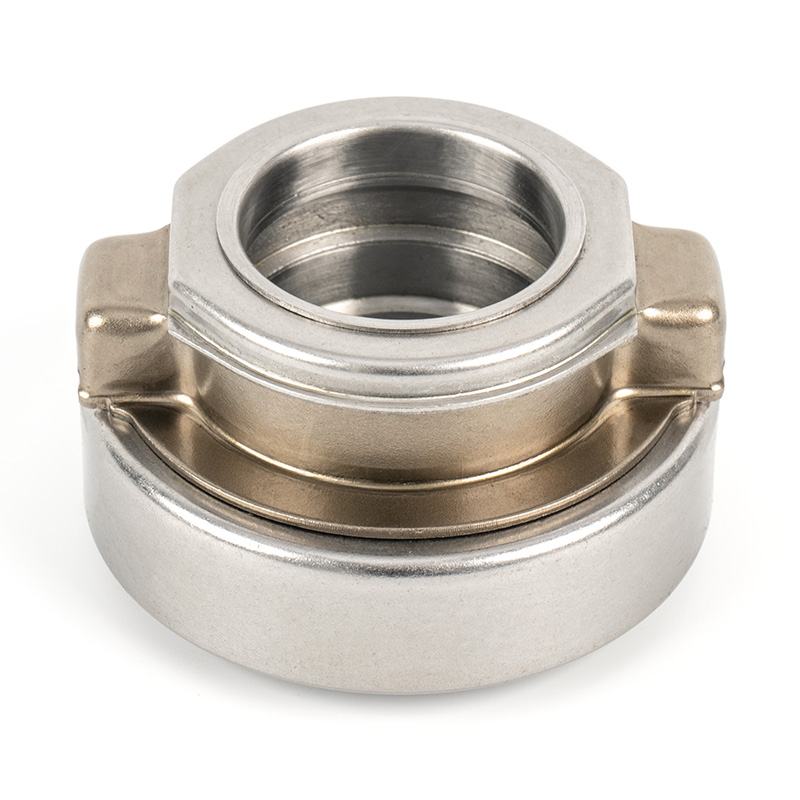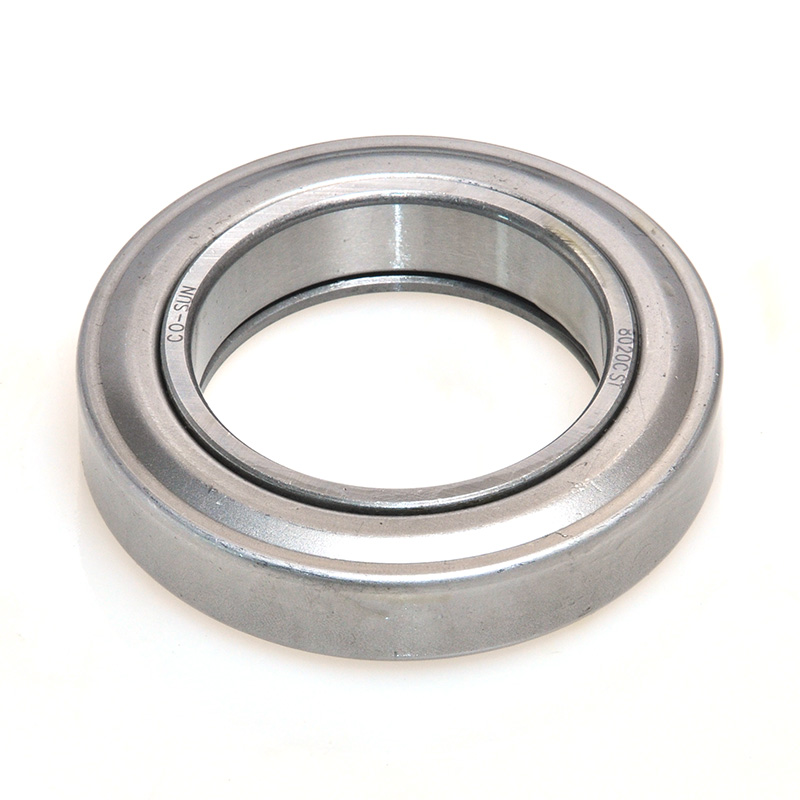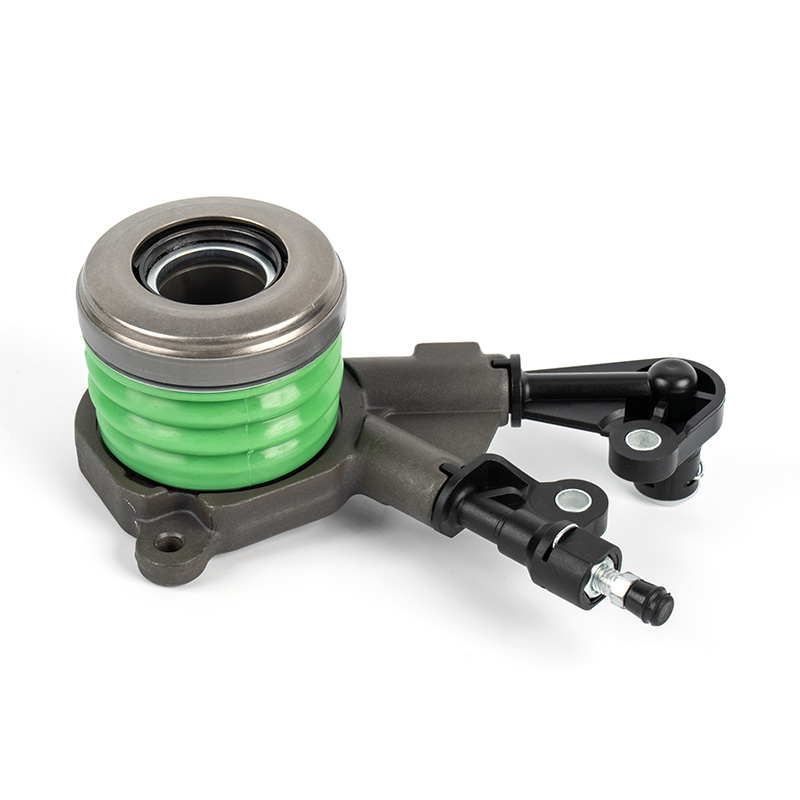Automotive Auto Bearings: What Affects Their Service Life? Is Installation Precision More Important Than Material?
As core components of automotive transmission, steering, and braking systems, auto bearings bear radial and axial loads while ensuring smooth rotation of parts like wheels, engines, and gearboxes. Their service life directly relates to vehicle safety, reliability, and maintenance costs. What factors specifically impact the service life of auto bearings? In the context of extending bearing life, is installation precision truly more important than material selection? This article will conduct an in-depth analysis around these core questions.
What Are the Core Factors Affecting the Service Life of Auto Bearings?
The service life of auto bearings (typically measured by the number of rotations or operating hours before fatigue failure) is not determined by a single factor but by the combined effect of multiple elements throughout their lifecycle.
First is load condition, which is the most direct influencing factor. Auto bearings are designed to withstand specific rated loads—exceeding these loads (either short-term impact loads or long-term overloads) will significantly accelerate fatigue damage. For example, wheel bearings of passenger cars usually have a radial rated load of 20-30 kN; if the vehicle frequently carries heavy loads (exceeding the rated load by 30% or more), the bearing life may be reduced by 50% or even more. In addition, uneven load distribution (caused by factors like bent axles) will lead to localized stress concentration on the bearing raceway, resulting in premature pitting or cracking.
Second is lubrication quality. Effective lubrication forms a thin oil film between the bearing rolling elements and raceway, reducing metal-to-metal friction and wear, and also plays a role in cooling and preventing corrosion. Common lubrication failures include insufficient lubricating oil (or grease), aging of lubricants (due to high temperatures or long-term use), and contamination of lubricants (mixed with metal debris, dust, or water). For instance, if engine crankshaft bearings are contaminated with metal shavings (from abnormal wear of other parts), the oil film will be damaged, leading to "dry friction" between rolling elements and raceways, and the bearing may fail in just a few hundred kilometers.
Third is working environment. Auto bearings in different positions face varying environmental challenges: wheel bearings are exposed to road dust, rainwater, and salt spray (in cold regions with snow melting agents), which easily cause corrosion of the bearing outer ring and sealing elements; engine bearings operate in high-temperature environments (often 120-180°C), which accelerates the oxidation of lubricants and the aging of bearing materials. Corrosion or high-temperature softening of bearings will reduce their mechanical strength, making them more prone to deformation or fracture under load.
Fourth is installation and maintenance. Improper installation (such as incorrect fitting clearance, skewed installation, or excessive tightening of fastening bolts) will destroy the normal stress state of the bearing; irregular maintenance (such as delayed lubricant replacement or incomplete cleaning during maintenance) will allow hidden dangers to accumulate, both of which will shorten the bearing service life.
Is Installation Precision of Auto Bearings More Important Than Material? How to Compare Their Roles?
Installation precision and material are both key to ensuring auto bearing life, but their roles differ in the bearing lifecycle, and it is inaccurate to simply claim one is "more important" than the other—they complement each other, and deficiencies in either will lead to premature bearing failure.
From the perspective of material selection, high-quality bearing materials are the "foundation" of long life. Auto bearings typically use high-carbon chromium bearing steel (such as SUJ2/SAE 52100), which has high hardness (HRC 58-62 after heat treatment), good wear resistance, and fatigue strength. For bearings in high-temperature or high-corrosion environments (such as turbocharger bearings), special materials like heat-resistant alloy steel or ceramic composites are used—ceramic bearings (e.g., silicon nitride ceramics) have a service life 2-3 times that of traditional steel bearings in high-temperature environments above 200°C. If the material does not meet the standard (e.g., low hardness due to substandard heat treatment), even with perfect installation, the bearing raceway will quickly wear out, and fatigue cracks will appear in a short time.
From the perspective of installation precision, it is the "guarantee" to give full play to the material performance. Even with high-quality materials, poor installation will make the bearing unable to work in the designed state. The key indicators of installation precision include:
- Fitting clearance: The internal clearance of auto bearings (the gap between rolling elements and raceway) must match the working temperature and load—too small a clearance will cause the bearing to overheat due to thermal expansion during operation; too large a clearance will lead to unstable rotation and increased impact noise. For example, wheel bearings usually require a radial internal clearance of 0.015-0.025 mm; deviations beyond this range will reduce life by 30-40%.
- Coaxiality: The installation axis of the bearing must be coaxial with the rotating shaft (coaxiality error ≤ 0.01 mm), otherwise, the bearing will be subjected to additional bending loads, resulting in uneven stress distribution.
- Fastening torque: Fastening bolts (such as wheel bearing hub bolts) must be tightened according to the specified torque—over-tightening will cause the bearing outer ring to deform; under-tightening will lead to loose fit and increased vibration. For example, the torque of passenger car wheel bearing bolts is usually 80-120 N·m; a 20% deviation from this range will significantly increase the risk of bearing failure.
In practical scenarios, if the bearing material is unqualified, installation precision can only delay but not avoid failure; if installation is extremely poor (e.g., severe coaxiality error), even the best material will fail quickly. Therefore, the two are equally important, and both must meet the standard to ensure the designed service life of the bearing.
What Are the Requirements for Installation Precision of Auto Bearings in Different Application Scenarios?
Auto bearings are used in multiple systems of vehicles, and different application scenarios have different requirements for installation precision due to differences in load characteristics and working environments.
For wheel bearings (the most commonly used auto bearings), installation precision directly affects driving safety. The core installation requirements include:
- The hub bearing assembly must be coaxial with the steering knuckle (coaxiality error ≤ 0.008 mm) to avoid additional radial loads.
- The bearing inner ring must be tightly fitted with the axle shaft (interference fit of 0.005-0.01 mm) to prevent relative sliding between the inner ring and the shaft (which causes wear and heat generation).
- After installation, the axial clearance must be adjusted to 0.005-0.015 mm (usually through adjusting nuts or shims) to ensure smooth rotation while avoiding excessive clearance.
For engine crankshaft bearings (subject to high temperature and alternating loads), the installation precision requirements are more stringent:
- The bearing shell (split-type sliding bearing) must have uniform contact with the crankshaft journal—contact area ≥ 85% to ensure even load distribution.
- The oil clearance (gap between the bearing shell and journal) must be 0.02-0.04 mm (depending on the engine displacement); too small a clearance will block the oil passage, while too large a clearance will reduce oil pressure and affect lubrication.
- The bearing shell must be installed in the correct orientation (marked with positioning notches) to prevent misalignment and oil hole blockage.
For transmission gearbox bearings (subject to variable loads and high-speed rotation), the key installation requirements are:
- The bearing outer ring must be tightly fitted with the gearbox housing (interference fit of 0.003-0.008 mm) to avoid outer ring rotation and wear of the housing.
- The axial preload must be controlled within the specified range (usually 50-150 N for ball bearings) to reduce vibration and noise during high-speed rotation and improve the stability of the transmission system.
How to Optimize Material Selection and Installation Precision to Extend Auto Bearing Life?
To maximize the service life of auto bearings, targeted optimization must be carried out in both material selection and installation precision, combined with actual application scenarios.
In terms of material optimization:
- For general-purpose bearings (such as fan bearings), high-carbon chromium bearing steel (SUJ2/52100) with standard heat treatment is sufficient to meet the service life requirements (usually 80,000-120,000 km).
- For bearings in harsh environments: Turbocharger bearings (working temperature up to 250°C) should use heat-resistant alloy steel (such as M50 tool steel) with high-temperature stability; marine vehicle wheel bearings (exposed to salt spray) should use stainless steel bearings (such as AISI 440C) with corrosion resistance, or ordinary steel bearings with enhanced surface coating (such as zinc-nickel alloy plating).
- For new energy vehicle (NEV) motor bearings (high-speed rotation, up to 15,000 rpm), ceramic hybrid bearings (steel inner/outer rings + ceramic rolling elements) can be selected—ceramic rolling elements have lower density and higher stiffness, which can reduce centrifugal force and wear at high speeds, extending life by 50% compared to all-steel bearings.
In terms of installation precision optimization:
- Use professional installation tools: For example, use a torque wrench to tighten bolts according to the specified torque (avoiding manual estimation), use a dial indicator to measure coaxiality and clearance (measurement accuracy up to 0.001 mm), and use a bearing press to install the bearing (avoiding hammering, which causes damage to the raceway).
- Strictly follow the installation process: For split-type bearings (such as crankshaft bearings), clean the bearing shell and journal with diesel oil first to remove debris; apply a thin layer of lubricating oil before installation to ensure initial lubrication; after installation, rotate the shaft manually to check for jamming (indicating excessive interference or misalignment).
- Conduct post-installation testing: After installing wheel bearings, perform a road test at low speed (30-50 km/h) to check for abnormal noise or vibration; after installing engine bearings, measure the oil pressure and temperature during idle operation to ensure normal lubrication (oil pressure ≥ 200 kPa, temperature ≤ 90°C).
What Common Misconceptions About Auto Bearing Life Should Be Avoided?
In the selection, installation, and maintenance of auto bearings, some common misconceptions often lead to incorrect operations, shortening the bearing service life.
One common misconception is believing that "higher hardness of bearing material means longer life". While high hardness is necessary for wear resistance, excessively high hardness (exceeding HRC 63) will reduce the toughness of the bearing material, making it more prone to cracking under impact loads (such as when the vehicle passes over potholes). The hardness of auto bearings must be balanced with toughness, and the standard HRC 58-62 range is the result of comprehensive optimization.
Another misconception is ignoring the impact of installation clearance and only focusing on fastening torque. Some maintenance personnel only tighten the bearing bolts to the specified torque but do not check the internal clearance—this may lead to too small a clearance due to thermal expansion during operation, causing the bearing to overheat and lock up. The correct approach is to adjust the clearance while controlling the torque, ensuring both are within the standard range.
The third misconception is replacing only the bearing itself without checking related parts. For example, when replacing a wheel bearing, if the steering knuckle (which matches the bearing outer ring) is worn (with a wear amount exceeding 0.02 mm), the new bearing will have uneven load distribution, leading to premature failure. Therefore, during maintenance, related parts (such as shafts, housings, and fastening bolts) should be inspected together, and worn parts should be replaced simultaneously.
The fourth misconception is using inferior lubricants to reduce costs. Some users choose low-priced lubricating oil or grease that does not meet the standard—these lubricants have poor high-temperature resistance and anti-wear performance, and their oil film is easily damaged, leading to increased friction and wear of the bearing. The lubricant used for auto bearings must meet the specifications of the vehicle manufacturer (such as SAE 5W-30 for engine bearings, lithium-based grease for wheel bearings).
 +86-13867573512
+86-13867573512

